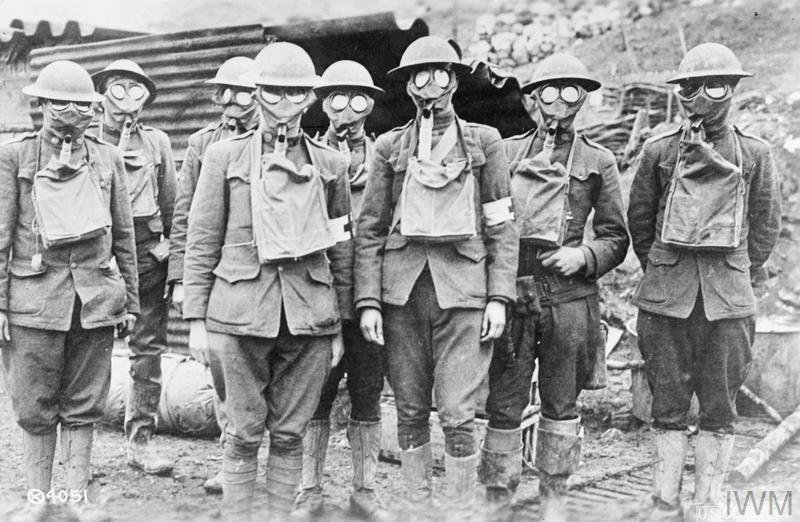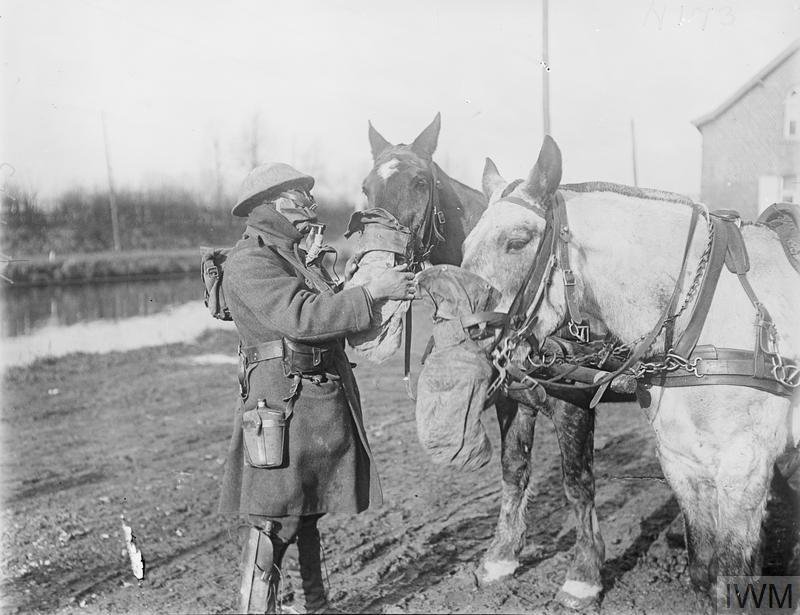
During the Battle of Flanders in July 1917, German soldiers deployed sulfur mustard-containing artillery shells on unsuspecting British and Canadian troops, marking the first time "mustard gas" had been used as a chemical warfare agent in war. Since then, sulfur mustard has been used repeatedly in battle—with no known antidote available for treatment.

However, a new study from two South Dakota State University researchers has revealed an effective approach to treating sulfur mustard poisoning.
"Since World War I, no one has been able to come up with an effective antidote (to sulfur mustard poisoning)," said Brian Logue, professor in SDSU's Department of Chemistry, Biochemistry and Physics. "This study explores a possible treatment."
Logue became involved with this type of research after graduating with his doctorate in 2000. As an undergraduate, he came to SDSU on a ROTC scholarship and was commissioned into the U.S. Army following graduation. During his years in the military, Logue led a research group for the U.S. Army's Medical Research Institute of Chemical Defense as a bioanalytical chemist. His primary research focus was on chemical and biological warfare agents and weapons.

"When I got into the Army lab in 2003, their mission was looking at antidotes for chemical agent exposure," Logue said.
When Logue returned to SDSU and set up his research lab, he began investigating if any molecules would be effective in "neutralizing" sulfur mustard after a person had been exposed to it. When Rachel Willand-Charnley joined SDSU's Department of Chemistry, Biochemistry and Physics as an assistant professor in 2019, research on an effective treatment began in earnest.
Sulfur mustard history
As noted, sulfur mustard was first used as a chemical weapon during World War I, but its discovery happened nearly a century earlier when French chemist Cesar-Mansuete Despretz reported on early sulfur mustard properties. It quickly earned the nickname "King of Battle Gases" after being a highly effective combat weapon during WWI. It's estimated that the agent was responsible for 33,000 deaths and over 600,000 injuries during the war.
While it was most widely used during WWI, it has been used in combat continuously since, most notably during the Iran-Iraq War in the 1980s and the ongoing Syrian civil war. When mustard gas is deployed, it can penetrate through various routes of the body, including the skin, respiratory system, conjunctiva and the gastrointestinal system.
The gas has both short- and long-term effects on its victims. Immediate effects include a "bitter taste in the mouth" and a smell of "garlic," according to previous research on the effect of mustard gas during the Iran-Iraq War. Headaches and a loss of vision, followed by blistering and bleeding skin, develop shortly after the gas is deployed. The long-term effects, which can be felt as much as 40 years after exposure, include pulmonary, ophthalmic and dermatologic complications.
"Sulfur mustard causes issues for chemical structures like proteins and DNA that shouldn't have this chemical attached to it," Logue said. "When the chemical becomes attached, essentially the process goes haywire. The results can be pretty nasty in terms of skin exposure. While not immediately lethal, the effects of sulfur mustard incapacitate a person, and the medical system can quickly become overwhelmed."
In terms of chemical weapons, mustard gas is quite "easy" to produce, which is why researchers have been searching for an effective treatment for some time.

Finding a treatment
The challenge with finding a treatment for sulfur mustard is that it has multiple mechanisms of attacking the body and doesn't target a single enzyme, as other chemical weapons do. Because of its multiple mechanisms, there isn't a single anti-toxin that can block the gas and subsequently be used as an antidote.
Logue's prior work indicated that a neutralizing molecule could possibly work as an effective treatment for when skin is exposed to sulfur mustard. As an organic and biochemist, Willand-Charnley was able to help develop an effective therapeutic for this treatment.
"Our goal was to develop a therapeutic that would selectively react with the sulfur mustard," Willand-Charnley said. "Avoiding cross reactivity with biomolecules, thwarting cellular damage.”
The research team identified a molecule—methimazole—that has a level of reactivity with sulfur mustard that wouldn't damage skin. Results from this study reveal that methimazole could serve as an effective treatment option.
Now that a molecule has been identified, the team is preparing a grant that would further this research on living organisms. The goal is to one day have this treatment widely available for sulfur mustard exposures.
"Current efficacy studies in vivo are underway to evaluate this promising therapeutic for sulfur mustard injuries," Willand-Charnley said. "Based on these results, we may finally have a viable therapeutic approach to reduce both the immediate and long-term toxicity of sulfur mustard."
Contributing authors include Albert Armoo, Tanner Diemer, Abigail Donkor, Jerrod Fedorchik and Severine Van slambrouck.
The study was published in the academic journal ACS Bio & Med Chem Au.
- Contact:
- Telephone number: 605-688-6161
Republishing
You may republish SDSU News Center articles for free, online or in print. Questions? Contact us at sdsu.news@sdstate.edu or 605-688-6161.

